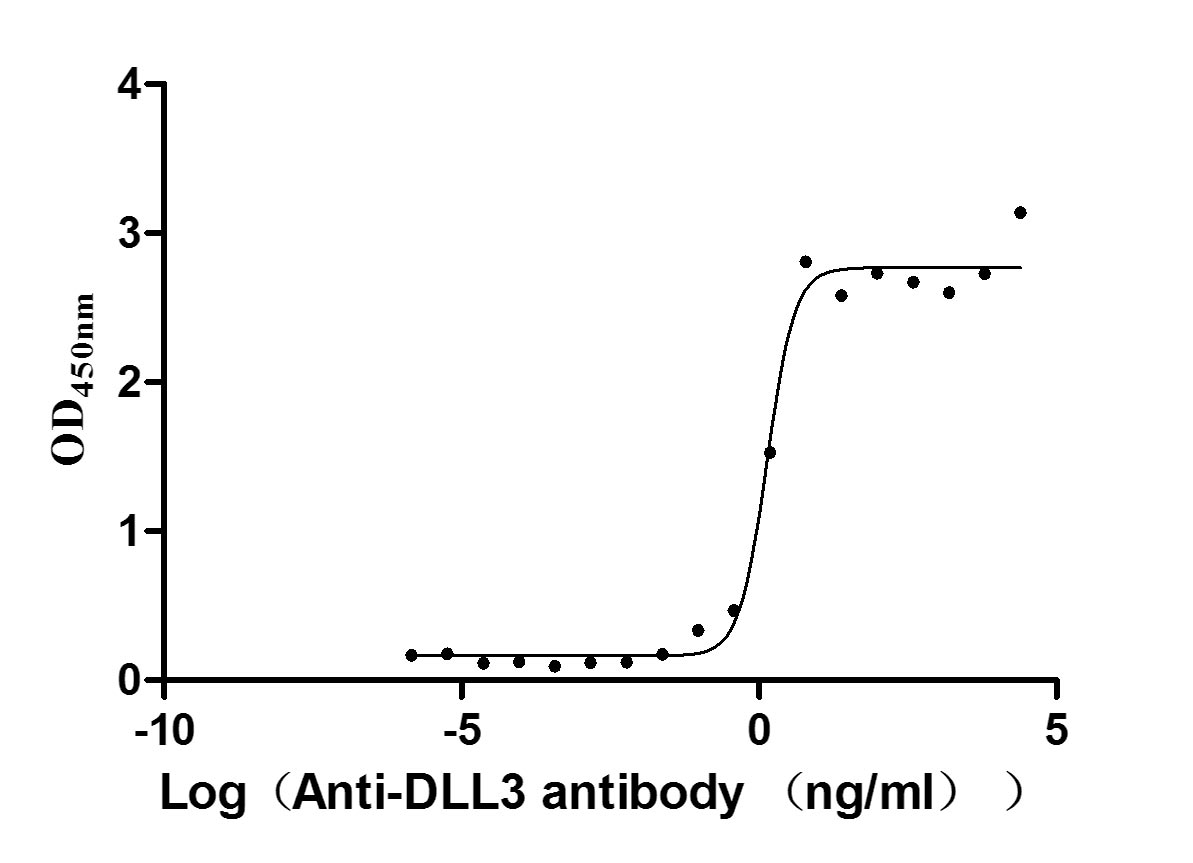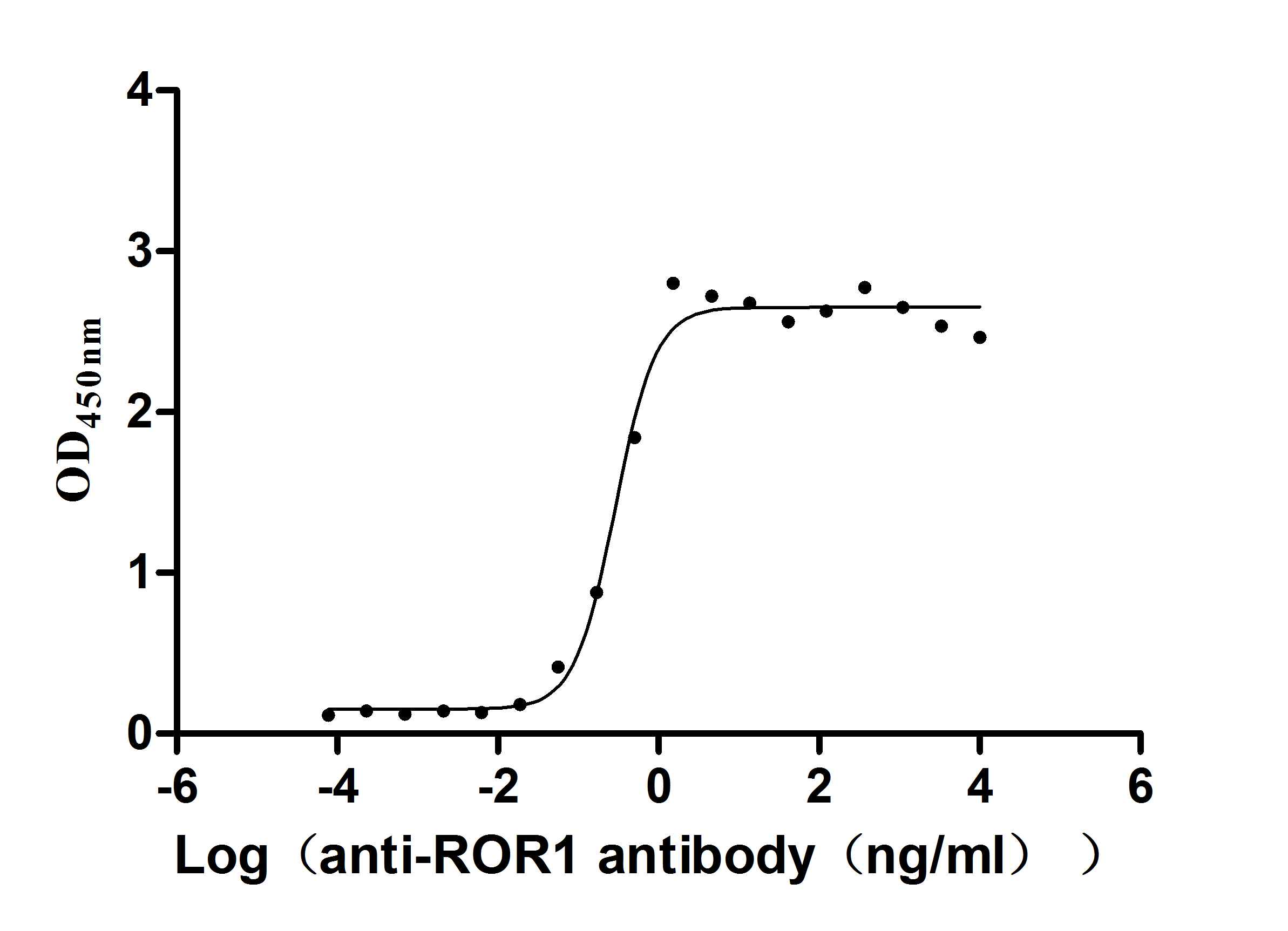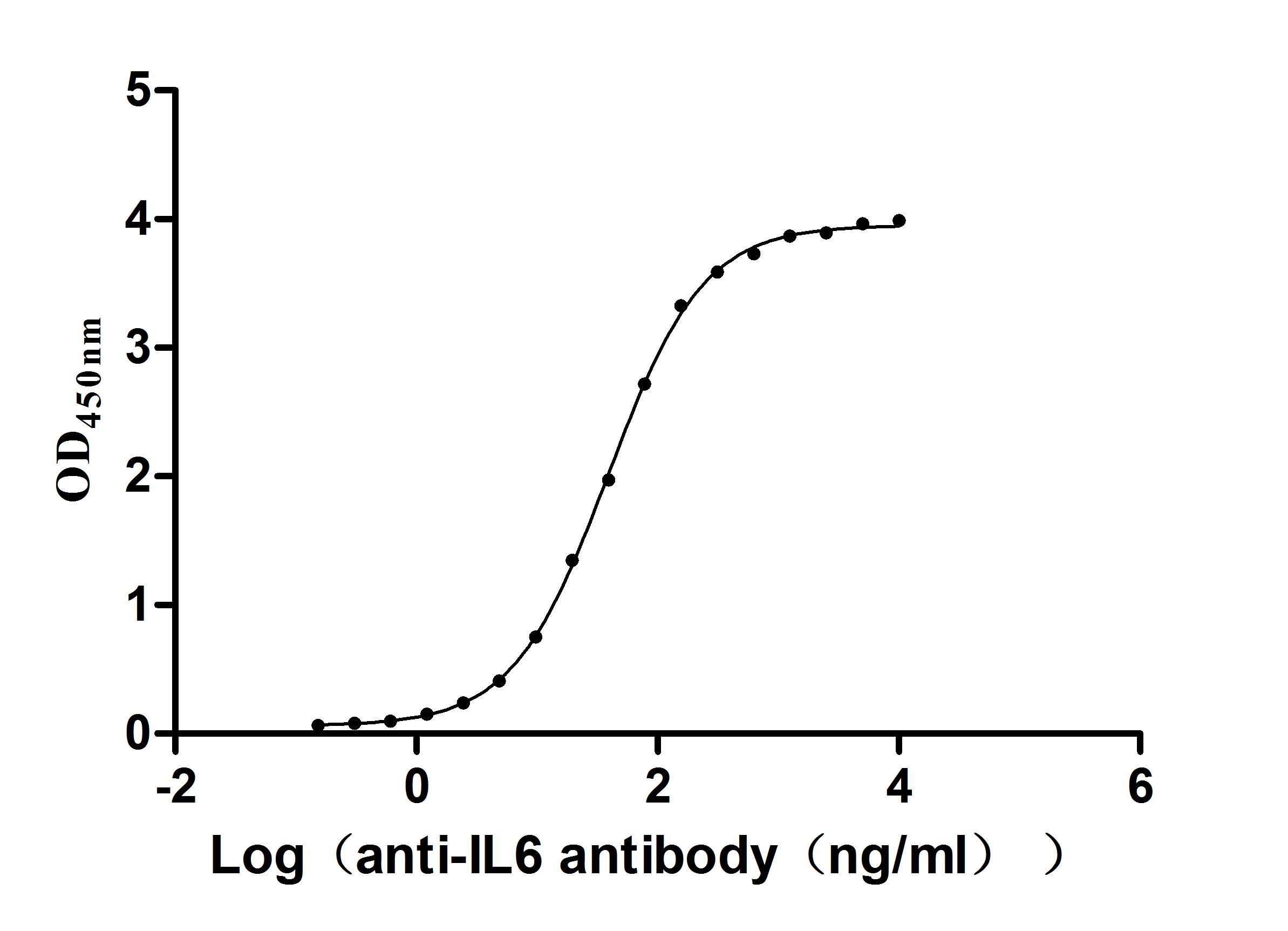Recombinant Human Cellular retinoic acid-binding protein 1 (CRABP1)
-
中文名称:Recombinant Human Cellular retinoic acid-binding protein 1(CRABP1),Yeast
-
货号:CSB-YP005935HU
-
规格:
-
来源:Yeast
-
其他:
-
中文名称:Recombinant Human Cellular retinoic acid-binding protein 1(CRABP1),Yeast
-
货号:CSB-EP005935HU-B
-
规格:
-
来源:E.coli
-
共轭:Avi-tag Biotinylated
E. coli biotin ligase (BirA) is highly specific in covalently attaching biotin to the 15 amino acid AviTag peptide. This recombinant protein was biotinylated in vivo by AviTag-BirA technology, which method is BriA catalyzes amide linkage between the biotin and the specific lysine of the AviTag.
-
其他:
-
中文名称:Recombinant Human Cellular retinoic acid-binding protein 1(CRABP1),Yeast
-
货号:CSB-BP005935HU
-
规格:
-
来源:Baculovirus
-
其他:
-
中文名称:Recombinant Human Cellular retinoic acid-binding protein 1(CRABP1),Yeast
-
货号:CSB-MP005935HU
-
规格:
-
来源:Mammalian cell
-
其他:
产品详情
-
纯度:>85% (SDS-PAGE)
-
基因名:CRABP1
-
Uniprot No.:
-
别名:Cellular retinoic acid binding protein 1; Cellular retinoic acid-binding protein 1; Cellular retinoic acid-binding protein I; CRABP 1; CRABP; CRABP I; CRABP-I; Crabp1; CRABPI; RABP1_HUMAN; RBP 5; RBP5; Retinoic acid binding protein I cellular
-
种属:Homo sapiens (Human)
-
蛋白长度:Full Length of Mature Protein
-
表达区域:2-137
-
氨基酸序列PNFAGTWKM RSSENFDELL KALGVNAMLR KVAVAAASKP HVEIRQDGDQ FYIKTSTTVR TTEINFKVGE GFEEETVDGR KCRSLATWEN ENKIHCTQTL LEGDGPKTYW TRELANDELI LTFGADDVVC TRIYVRE
-
蛋白标签:Tag type will be determined during the manufacturing process.
The tag type will be determined during production process. If you have specified tag type, please tell us and we will develop the specified tag preferentially. -
产品提供形式:Lyophilized powder
Note: We will preferentially ship the format that we have in stock, however, if you have any special requirement for the format, please remark your requirement when placing the order, we will prepare according to your demand. -
复溶:We recommend that this vial be briefly centrifuged prior to opening to bring the contents to the bottom. Please reconstitute protein in deionized sterile water to a concentration of 0.1-1.0 mg/mL.We recommend to add 5-50% of glycerol (final concentration) and aliquot for long-term storage at -20℃/-80℃. Our default final concentration of glycerol is 50%. Customers could use it as reference.
-
储存条件:Store at -20°C/-80°C upon receipt, aliquoting is necessary for mutiple use. Avoid repeated freeze-thaw cycles.
-
保质期:The shelf life is related to many factors, storage state, buffer ingredients, storage temperature and the stability of the protein itself.
Generally, the shelf life of liquid form is 6 months at -20°C/-80°C. The shelf life of lyophilized form is 12 months at -20°C/-80°C. -
货期:Delivery time may differ from different purchasing way or location, please kindly consult your local distributors for specific delivery time.Note: All of our proteins are default shipped with normal blue ice packs, if you request to ship with dry ice, please communicate with us in advance and extra fees will be charged.
-
注意事项:Repeated freezing and thawing is not recommended. Store working aliquots at 4°C for up to one week.
-
Datasheet :Please contact us to get it.
相关产品
靶点详情
-
功能:Cytosolic CRABPs may regulate the access of retinoic acid to the nuclear retinoic acid receptors.
-
基因功能参考文献:
- We conclude that the underexpression of CRABP1 and the overexpression of LCN2 may be useful diagnostic biomarkers in thyroid tumours with questionable malignity, and the overexpression of LCN2 and C1QL1 may be useful for prognostic purposes. PMID: 29321030
- Holo-CRABPs had higher affinity for CYP26B1 than free atRA, but both apo-CRABPs(CRABP-I and CRABP-II ) inhibited the formation of 4-OH-RA by CYP26B1. PMID: 27416800
- p75NTR and CRABP1 modulate the effect of fenretinide on neuroblastoma cells PMID: 26843908
- miR-93/miR-106b/miR-375-CIC-CRABP1 is a novel key regulatory axis in prostate cancer progression PMID: 26124181
- CRABP1 expression is maintained in ER- and triple-negative breast tumors, and that elevated levels of CRABP1 is a significant indicator of high tumor grade, Ki67 immunoreactivity, and poor prognosis. PMID: 26142905
- the first evidence of pro-tumorigenic and pro-metastatic activity of CRABP1 in mesenchymal and neuroendocrine tumors. PMID: 24626200
- we demonstrated significant changes in CRABP1 and CRABP2 expression in non-small cell lung cancer samples PMID: 25034531
- Factors involved in the retinoid pathway, in particular upregulation of CRBP, CRABP1 and CRABP2, also showed differential expression in tumors with different histological subtypes PMID: 24269351
- Results describe the mRNA expression of CRABP1, RERG, and GRP in pituitary adenomas. PMID: 21270509
- reduced expression of CRABP1 has a potential as a prognostic marker for serous adenocarcinoma which is the most frequent histological ovarian tumor type and also for clear cell carcinoma that often exhibits chemo-resistance. PMID: 20571827
- Loss of cellular retinoic acid binding protein 1 function due to hypermethylation of its promoter leads to pathogenesis of papillary thyroid carcinoma PMID: 12640681
- CSF of Moyamoya Disease [MMD] patients reveals high CRABP-I expression suggesting that the elevation of CRABP-I in CSF may be a candidate for pathogenesis of MMD PMID: 14605320
- CRABP I plays an important role not only in mediating the retinoid effects, but also in modulating the radiation sensitivity of tumour cells after combined retinoic acid radiation treatment. PMID: 14713576
- increased CYP26-mediated catabolism of retinoic by CRABP-I transfection might decrease the amount of retinoic acid that is accessible to the nuclear receptors PMID: 15281009
- Decreases in the CRABP1 (cellular retinoic acid binding protein 1) and TFF3 (trefoil factor 3) expression levels identified these as candidate molecular biomarkers for papillary thyroid carcinoma. PMID: 15515157
- Real-time RT-PCR analysis disclosed a significant lack of CRABP-I expression in four renal cell carcinoma cell lines PMID: 16254461
- Hypermethylation was subsequently identified for three of four analyzed genes, ADAMTS1 (85%), CRABP1 (90%), and NR3C1 (35%). PMID: 17167179
- Frequent methylation-associated silencing of CRABP1 is associated with esophageal squamous-cell carcinoma PMID: 17438526
- DNA hypermethylation of tumour suppressor genes seems to play an important role in ovarian carcinogenesis and HOXA9, HOXB5, SCGB3A1, and CRABP1 are identified as novel hypermethylated target genes in this tumour type PMID: 17623056
- As epidermal basal keratinocyte proliferation is stimulated by paracrine growth factors secreted by ATRA activated suprabasal keratinocytes, our results indicate that CRABPI overexpression in suprabasal keratinocytes enhances ATRA. PMID: 17727842
- supports an active role for PLZF and RARalpha-PLZF in leukemogenesis, identifies up-regulation of CRABPI PMID: 18000064
- The s identified several dysregulated genes and proteins, but only the cellular retinoic acid binding protein 1 (CRABP1) was up-regulated exclusively in cells expressing an increased Abeta42/Abeta40 ratio. PMID: 19087254
显示更多
收起更多
-
亚细胞定位:Cytoplasm.
-
蛋白家族:Calycin superfamily, Fatty-acid binding protein (FABP) family
-
数据库链接:
HGNC: 2338
OMIM: 180230
KEGG: hsa:1381
STRING: 9606.ENSP00000299529
UniGene: Hs.346950
Most popular with customers
-
Recombinant Human Delta-like protein 3 (DLL3), partial (Active)
Express system: Mammalian cell
Species: Homo sapiens (Human)
-
Express system: Mammalian cell
Species: Homo sapiens (Human)
-
Recombinant Mouse Retinol-binding protein 4 (Rbp4) (Active)
Express system: Mammalian cell
Species: Mus musculus (Mouse)
-
Recombinant Dog Angiopoietin-2 (ANGPT2) (Active)
Express system: Mammalian cell
Species: Canis lupus familiaris (Dog) (Canis familiaris)
-
Recombinant Human Claudin-6 (CLDN6)-VLPs, Fluorescent (Active)
Express system: Mammalian cell
Species: Homo sapiens (Human)
-
Recombinant Human C-type lectin domain family 4 member C (CLEC4C), partial (Active)
Express system: Mammalian cell
Species: Homo sapiens (Human)
-
Recombinant Human Serine/threonine-protein kinase receptor R3 (ACVRL1), partial (Active)
Express system: Baculovirus
Species: Homo sapiens (Human)
-






f4-AC1.jpg)













